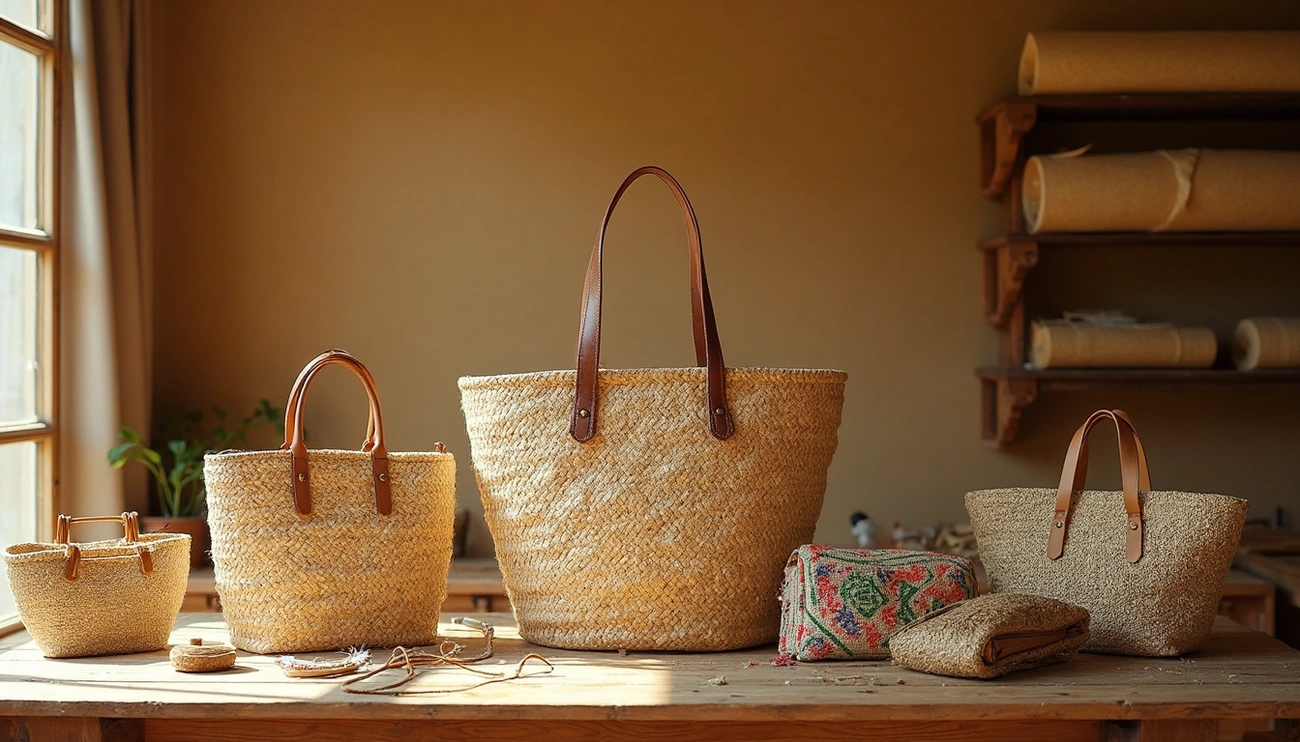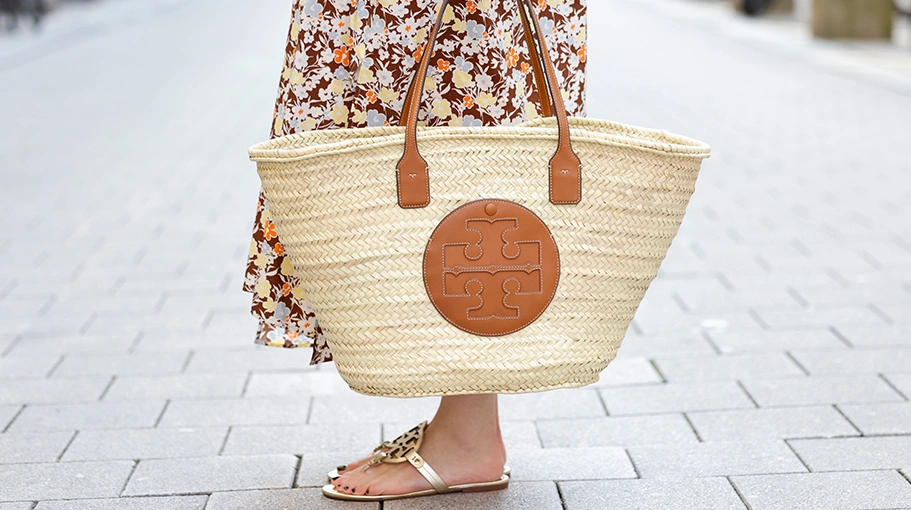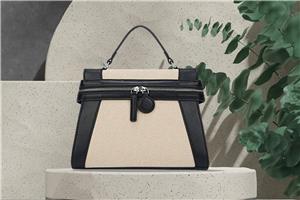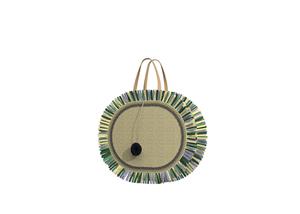The Hidden Art of Handmade Bags: From Tradition to Modern Style
The Hidden Art of Handmade Bags: From Tradition to Modern Style
Handmade bags are leading a revolution against mass production. The global handicraft handbag market stands at USD 1.8 billion in 2024 and experts predict it will reach USD 3.5 billion by 2033. Mass-produced fashion keeps harming our environment, but choosing handcrafted accessories helps reduce your carbon footprint.
These artisanal bags showcase authentic craftsmanship that you can see and feel. Your daily errands become more stylish with versatile handmade totes, and natural beach bags add perfect companions to sun-soaked road trips. The charm of crochet handmade bags brings a vintage touch to your wardrobe. Their handwoven accents and colorful pom-poms breathe life into any outfit.
Most handmade bags use renewable, biodegradable materials like palm leaves, seagrass, water hyacinth, or paper straw - unlike their mass-produced counterparts. Many products labeled as "straw bags" contain non-biodegradable plastic that pollutes our ecosystem for centuries. This piece explores authentic handmade bags' rich cultural heritage and modern styling possibilities.
The cultural roots of handmade bags
The art of making handmade bags dates back to prehistoric times. Our ancestors needed ways to carry their essential items. They crafted simple carriers from animal skins and plant fibers to hold food, tools, and daily necessities. These practical objects have grown into intricate cultural artifacts that hold deep meaning today.
How traditional weaving techniques began
Traditional weaving ranks among humanity's oldest crafts and developed naturally in different civilizations. Many cultures wrap their weaving techniques in mythology and ancestral wisdom. The Wayuu people of Colombia and Venezuela believe that a mythical spider named Wale'kerü taught their women how to weave. These indigenous artisans create mochilas (traditional bags) using techniques handed down through generations.
Bag making has grown alongside human civilization. Communities developed more complex weaving methods as societies advanced. Simple functional carriers became powerful expressions of cultural identity and artistic achievement. Backstrap weaving became the heart of cultural expression in the Andes mountains because Quechua started as an oral language. Textiles served as the main way to share thoughts, record histories, and tell stories.
Regions known for handmade craftsmanship
Several regions around the world have become famous for their exceptional handmade bag craftsmanship:
India offers a rich source of bag-making traditions, from intricate handloom weaving to detailed basket work. Indian artisans create distinctive pieces with silk, cotton, jute, and other eco-friendly fibers that showcase their regional esthetics.
La Guajira Peninsula between Colombia and Venezuela houses the Wayuu people. Their bags showcase geometric patterns called 'Kanaas' that represent everything from animals to celestial bodies and cultural myths.
Africa showcases remarkable handcrafted traditions. Artisans use local, biodegradable materials like raffia and sisal. Each bag tells a story of cultural identity through traditional weaving, dyeing, and beading techniques.
Pakistan shines with regional specialties. Areas like Multan and Swat have earned fame for handmade bags that feature mirror work, beadwork, and hand-painted motifs.
These regions developed unique techniques based on available materials and cultural needs. Leather bag making has thrived in Tuscany, Italy since the twelfth century. Historical evidence shows people carried these bags attached to belts with straps or ribbons.
Why handmade bags carry cultural value
Handmade bags serve as bridges to cultural heritage beyond their practical use. Each carefully crafted piece tells the story of its creators' artistic traditions, environmental influences, and historical narratives.
The woven patterns in these bags often hold deeper meanings. African bags feature motifs that show tribal identity and social status. Pakistani bags display traditional embroidery styles like Phulkari and Balochi that carry cultural stories passed through generations.
These handmade bags help sustain traditional communities economically. Buying these items supports cultural preservation and helps keep ancient techniques alive in our industrial age. Bag production provides vital income for many African communities, supporting local artisans and their families.
These bags represent knowledge passed down through generations. From Peru's backstrap weaving to India's basket weaving traditions, these skills connect ancestors to descendants. They create living cultural artifacts that tell powerful stories of identity, resilience, and artistic excellence.
Popular styles of handmade bags today
The marketplace today showcases a wide range of handmade bag styles. These bags blend practicality with artisan craftsmanship and suit different lifestyles and personal styles.
Handmade tote bags for everyday use
Handmade tote bags have become must-haves in modern wardrobes. People love them because they're versatile and long-lasting. The Mini Urban Tote costs around $148 and works great for daily use. Its bigger cousin, the Mini Market Tote, gives you more room at about $215. These bags come with inside pockets that help you stay organized while keeping their handmade charm.
What makes handmade totes special is their strength. Most are made from 100% natural canvas with several inside compartments and full cotton lining. The bags get better with time as the natural materials develop their own unique character through regular use.
Mini clutches and evening styles
Handmade mini clutches add an artistic touch to special occasions. You'll find everything from simple fold designs to detailed creations. Quality pieces usually cost between $477-$635. Leather clutches with unique closures look sophisticated and show off traditional craft techniques.
Many craftspeople now make evening bags with wooden frames and brass details. These elements combine natural materials with formal style. Such statement pieces start conversations and look great with formal wear.
Natural beach bags for summer getaways
Natural beach bags capture the essence of handcrafted summer style. These ultra-tough straw bags last through years of beach trips and outdoor fun. You can choose from big totes that fit towels and water bottles or smaller designs for light trips.
Some standout features include:
Hand-dyed and hand-woven natural raffia bags
Sisal fiber bags with bold patterns
Banana palm fiber designs with unique textures
Most natural beach bags come with practical features like zippers, strong handles, and boho designs that work well for both beach days and casual outings. Madagascar's artisans create many of these distinctive bags. They blend practicality with vibrant looks.
Crochet handmade bags with vintage charm
Crochet handmade bags have made a big comeback. They connect today's fashion with a touch of nostalgia. Vintage-inspired designs show off complex patterns with geometric shapes or flower arrangements that reflect old-school techniques. These handcrafted bags often use natural cotton yarn and cost between $51 and $134.
Elena Handbags shows this trend perfectly with retro-style crochet totes. These bags measure about 35cm wide by 31cm tall and include zipper closures with 14-inch strap drops. The vintage crochet look appears in many styles, from hobo bags to slouchy shoulder bags and crossbody options with classic granny squares.
Crossbody and satchel styles for city life
Crossbody and satchel styles have become perfect city companions. They give you hands-free convenience with artisan quality. The Carriage Crossbody costs around $195 and shows how function meets craftsmanship. These bags usually have adjustable straps and smart organization features while keeping their handmade quality.
Today's handcrafted crossbody bags focus on versatility without losing style. Many use full-grain leather and thoughtful details like inside pockets. City-focused designs often include water-resistant materials and compact sizes that make getting around town easier.
Materials that define handmade bags
Natural materials shape how handmade bags look and work. Each fiber adds its own special touch to the bag's durability and feel.
Raffia and its tropical appeal
Raffia comes from palm tree leaves found in tropical parts of Africa, Asia, and Australia. This natural fiber grows back quick and makes bags that are light yet strong. The fiber looks like straw and can stay its natural golden-brown color or take on bright dyes. So, these fibers create those classic basket-style bags that Jane Birkin made famous with her French-girl style - a look that's still hot today.
Seagrass and jute for rustic texture
Handmade bags made from seagrass and jute have a unique rustic charm. Seagrass grows in shallow coastal waters and stays strong despite looking delicate. Craftsmen often mix it with jute stripes to create 100% handmade bags that show off their skill. Jute grows mostly in India and Bangladesh and gives us long, soft, shiny fibers perfect for weaving. These materials look great but need to stay dry since water can make their natural fibers weak.
Rattan and wicker for structure
Rattan stands out as one of the best materials for structured bags. This climbing vine grows an amazing 200 meters each year - seven times faster than trees. This makes it a great eco-friendly choice. Wicker isn't actually a material but a way of weaving rattan, reeds, or bamboo together. A skilled weaver needs a whole month to make just one rattan bag by hand, using techniques that go back to Ancient Egypt.
Bamboo and wood accents
Bamboo adds special charm to handmade bags with its strength and flex. It grows faster than hardwoods, which makes it perfect for eco-friendly accessories. Bamboo's fibers pack tight and stay strong, so they handle daily use well and weigh less than other woods. The material works great for people with sensitive skin too, since it won't cause allergies.
Paper straw and recycled fibers
Paper straw gives us an earth-friendly option for making bags. Tightly woven paper fibers create surprisingly strong bags that break down naturally and can be recycled. Water can damage them, but paper straw bags are light and have a cool texture that designers love to work with in their collections.
How to care for your handmade bag
Your cherished handmade bags will last longer with proper care. These bags need specific attention to keep their beauty and functionality intact. A few simple maintenance techniques will help protect your investment.
Keep it dry and away from moisture
Water can damage most handmade bags. Natural fibers might warp, stain, or grow mold when they get too wet. A soft, dry cloth should blot (never rub) the surface if your bag gets wet. Let it air dry naturally. Don't use direct heat from radiators or hair dryers - they can make leather crack and natural fibers brittle.
Your leather handmade bags need a waterproofing spray made for leather goods. This creates a barrier against accidental spills. All the same, keep your handcrafted treasures in cool, dry places. The ideal humidity should be between 30-40% relative humidity.
Clean gently with soft brushes
Regular cleaning stops dirt from building up and damaging delicate materials. Take everything out of your bag and shake off any debris inside. A soft-bristled brush works best to remove surface dust without hurting the fibers.
Deep cleaning needs special cleaners made for your bag's material. Don't put products right on the bag. Instead, use a damp microfiber cloth with the right cleaner. Test it on a hidden spot first before cleaning the whole surface.
Store properly to maintain shape
Your bag needs to be empty during storage. Items left inside can change its shape permanently. Acid-free tissue paper or soft fabric helps keep the bag's structure. Never use newspaper - the ink can stain.
Cotton dust bags work best for storage because they let the material breathe. Plastic bags trap moisture and should never be used. Place bags upright on shelves with enough room between them. This prevents crushing. Move stored bags around now and then to avoid permanent creases.
Avoid overloading to prevent damage
Every handmade bag has its limits. Stuffing too much puts stress on seams, handles, and fibers. Structured bags and those made from natural materials like raffia or crochet need extra care. They can stretch beyond repair if you overload them.
The weight in your bag should be spread out evenly. Don't use it as a catch-all for heavy items that could damage its structure.
Where tradition meets modern fashion
Image Source: WWD
Artisanal handcrafted bags have sparked a renaissance in the high-fashion world as luxury brands rediscover traditional craftsmanship's appeal. The blend of time-honored techniques with modern design creates pieces that celebrate cultural heritage and meet today's esthetic needs.
How designers are reimagining handmade bags
Modern designers blend traditional techniques with contemporary styles to create unique fashion pieces that tell stories. Many brands highlight their products' human touch by advertising them as "100% handmade" to showcase authenticity. Strathberry's products showcase this approach, as they proudly state that each item is "beautifully handcrafted to the highest standards of craftsmanship in the mountain regions of Spain, where the knowledge & quality of leather work is exceptional".
Lebanon's Sarah's Bag embodies this philosophy as "strong believers in slow fashion." The brand emphasizes that "when you hold an item from Sarah's Bag, you're holding hours of meticulous hand-work, years of apprenticeship, and centuries-old traditions".
Collaborations between artisans and brands
Luxury brands and traditional artisans have formed remarkable partnerships:
Tod's and Rahul Mishra - This collaboration celebrates Italy's and India's artisanal heritage, with Mishra's classic embroidery of nature-inspired motifs adorning Tod's iconic accessories
Hermès and Kyoto Marble - Hermès found that the Nose family in Kyoto was likely the last group still marbled silk in the traditional way after years of searching
Fendi's Hand In Hand project - This initiative united ateliers throughout Italy to transform the traditional Baguette handbag into a genuine "objet d'art," with each limited-edition piece bearing the atelier's name and location
Handmade bags on runways and in street style
Industry observers note luxury handbags' novelty makeover during major fashion weeks. The weakening market for full-priced luxury handbags has led brands to release embellished versions of coveted bags through creative collaborations.
Street style during fashion weeks reveals consumers' growing interest in customizing their handbags. Handmade techniques have moved beyond high-end designer collections and entered everyday fashion as people search for distinctive accessories in a market that grows more uniform.
Conclusion
Handmade bags are nowhere near just accessories - they represent cultural heritage, eco-friendly methods, and timeless craftsmanship. These artisanal creations have transformed from basic carriers into powerful expressions of identity and artistic achievement through history.
Each handcrafted bag tells its own story, which explains the growing global market. Your selection of a structured rattan tote for daily errands or a delicate crochet clutch for special occasions shows both your personal style and environmental awareness.
Materials shape a handmade bag's character distinctively. Raffia brings tropical charm, while seagrass adds rustic texture. Rattan provides structure, bamboo gives distinctive strength, and paper straw serves as an eco-conscious option. Each material's specific properties need proper care to keep their beauty and functionality intact.
Simple maintenance can extend your handmade treasure's life by a lot. Your investment pieces will stay stunning for years if you keep them dry, clean them gently, store them properly, and avoid heavy items.
Traditional techniques now blend remarkably with contemporary design in fashion. Luxury brands increasingly cooperate with skilled artisans because they value handcrafted details. This renewed appreciation for manual craftsmanship creates pieces that celebrate cultural heritage and meet modern esthetic needs.
A handmade bag connects you to age-old traditions and reduces environmental effects. These unique accessories provide thoughtful alternatives to mass production. They showcase authenticity, superior craftsmanship, and meaningful stories in every stitch and weave. Your handcrafted bag becomes more than a carrier - it's a conscious statement about values, history, and personal style.
FAQs
Q1. What makes handmade bags special? Handmade bags are unique expressions of craftsmanship, combining cultural heritage with sustainable practices. Each piece tells a story through its materials, techniques, and artisanal touches, offering authenticity and superior quality compared to mass-produced alternatives.
Q2. How should I care for my handmade bag? Keep your handmade bag dry and away from moisture. Clean it gently with soft brushes, store it properly to maintain its shape, and avoid overloading it. These practices will help preserve its beauty and functionality for years to come.
Q3. What materials are commonly used in handmade bags? Popular materials include raffia for its tropical appeal, seagrass and jute for rustic texture, rattan and wicker for structure, bamboo and wood for accents, and paper straw for eco-conscious options. Each material brings unique characteristics to the bag's design and durability.
Q4. How are traditional techniques being incorporated into modern bag designs? Designers are reimagining handmade bags by fusing age-old techniques with contemporary styles. Luxury brands are collaborating with artisans to create unique pieces that honor cultural heritage while meeting modern esthetic demands, often highlighting the human touch in their products.
Q5. Are handmade bags worth the investment? While handmade bags can be more expensive due to the labor and materials involved, they offer exceptional value in terms of quality, uniqueness, and sustainability. They serve as thoughtful alternatives to mass production, connecting you to centuries-old traditions while reducing environmental impact.






